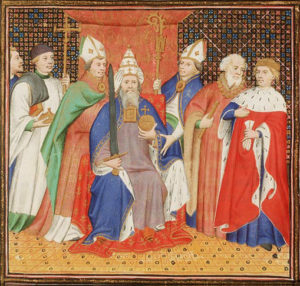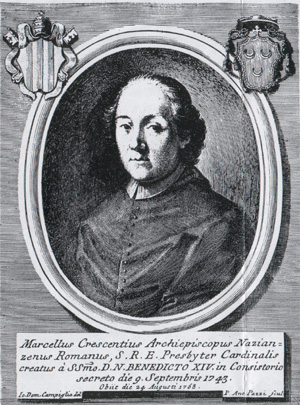 Over at her place, Ann Barnhardt was kind enough to pick up and repost my earnest invitation to prayer about a serious act of ecclesial persecution which is yet to be announced publicly. I want to respect the wishes of – and perhaps the on-going back-scenes work of – those involved. However, prayer can move mountains. I hope that your earnest prayers, raised for an intention that God knows, will result in the averting of or the mitigation of something that is going to hurt a lot of people and may have dire ripple effects. Trust me for now and pray sincerely and pointedly that this thing be diverted, blocked, mitigated, thwarted… whatever works best.
Over at her place, Ann Barnhardt was kind enough to pick up and repost my earnest invitation to prayer about a serious act of ecclesial persecution which is yet to be announced publicly. I want to respect the wishes of – and perhaps the on-going back-scenes work of – those involved. However, prayer can move mountains. I hope that your earnest prayers, raised for an intention that God knows, will result in the averting of or the mitigation of something that is going to hurt a lot of people and may have dire ripple effects. Trust me for now and pray sincerely and pointedly that this thing be diverted, blocked, mitigated, thwarted… whatever works best.
And since Ann cross posted with me, I will return the favor and send you her way. She has an interesting post – HERE – about the saint of the traditional calendar today, St. Henry II, Emperor and Confessor. He is not to be confused with Henry II Plantagenet of England (+1189) or Henry II of France (+1559).
He was Holy Roman Emperor in the 11th c. He was crowned by Pope Benedict VIII in Old St. Peter’s and was canonized in 1146, the only German monarch ever to be so. His wife, Cunigunde, is also a saint. There really should be more baby girls named Cunigunde.
St. Henry was involved with a dispute over the papacy.
There was a powerful family in Rome, the Crescenzi (a street is still named for them near the Pantheon), who had dominated pretty much everything to the point that he kept Henry from meeting with a couple of Popes who would have conferred the imperial title. When Benedict VIII was elected in 1012, Giovanni Crescenzio backed an anti-pope, Gregory VI. Benedict VIII fled Rome, going to Henry. Gregory also went to Henry. Henry deposed the anti-pope, Gregory, installed Benedict in Rome, got himself crowned, helped enact some needed reforms in Rome and then went back north.
Henry II persuaded Benedict VIII to add “filioque” to the Creed.
Also, Henry, who had wished to be a monk, did in fact join a monastery, having ordered the Abbot to accept him. The abbot complied. When Henry made his vow of obedience, the abbot commanded him to continue to function as Emperor.
The last of the Crescenzi, by the way, seems to have been the 18th c. Cardinal, Marcello, whom Benedict XIV knew to be rather intellectually slow but pious. He was a close friend of the famous preacher St. Leonard of Porte Maurice He wound up being a very good Archbp. of Ferrara and, at the same time, the secular legate there, thus combining in one person both ecclesial and secular power. His biography is really interesting – HERE.



































I come from a background where as recently as in the early years of last century baby girls in Central Europe were named Cunigunde I had a great aunt with that name.
Perhaps the diminutive of that name sounds better to Anglosphere speakers and that is the delightful name of “Kinga”.
Sts Henry and Cunigunde, pray for us!
Alas. But words, perhaps, really can compass my desire for the return of our Christian emperors.
“When, like committed linnets, I
With shriller throat shall sing
The sweetnes, mercy, majesty,
And glories of my King.
When I shall voyce aloud, how good
He is, how great should be,
Inlarged winds, that curle the flood,
Know no such liberty.”
-Richard Lovelace, “To Athlea, from Prison” (Excerpt)